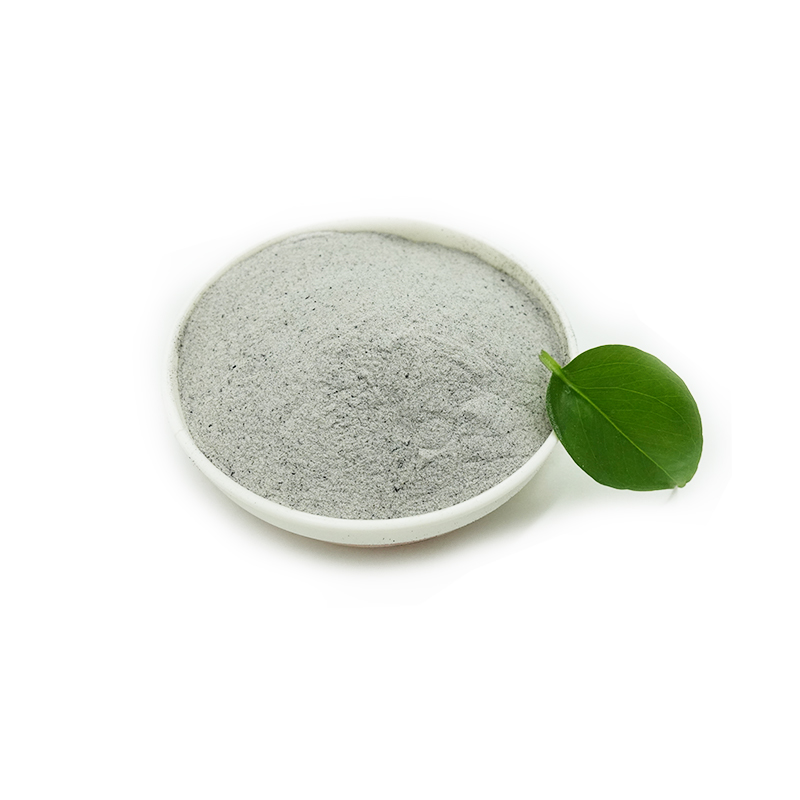Introduction to Organic Fertilization for Fig Trees
The health and productivity of fig trees are significantly influenced by the methods of fertilization used. The growth, health, and quality of fruit produced by fig trees can be transformed through an organic fertilizer choice. These types of fertilizers are derived from natural sources such as plant and animal waste, making them safe for the environment while also boosting soil biological activity which helps in sustaining the ecosystem.
Organic fertilizers have an added advantage of enhancing soil structure in comparison to manufactured ones and equally help in holding water. “Organic matter in these fertilizers improves soil structure allowing roots to grow more extensively and access more nutrients and water,” explains Dr. Linda Chalker-Scott, a horticulture science specialist. This is important for fig trees that love soils that drain well but are full of nutrients.
Another reason why organic fertilizers should be preferred over synthetics is their slow release pattern. This slow-release feature reduces cases like over-fertilization hence making sure the trees get what they require at a pace nature allows. Consequently, not only minimizes nutrient leaching into nearby aquatic bodies but it also ensures that there is constant supply of food substances for fig trees throughout their growing period.
Selecting organic fertilizers create a healthier environment for growth among farmers or gardeners’ figs thus supporting their farms or gardens sustainability through tastier fruits with better nutritional value. This approach aligns with the changing global trend towards more ecological farming practices that aim at preserving both plant health as well as that of the entire earth
Understanding Figs Nutrition Needs
Among all the plants, fig trees require a balanced blend of nutrition for their growth and fruiting, where each nutrient performs its specific function. This allows the essential nutrients to be supplied to fig trees through organic fertilizer in a way that is eco-friendly and sustainable.
Key Nutrients Needed by Fig Trees
- Nitrogen (N): Nitrogen helps in leaf and shoot development, thus supporting the production of well-developed foliage required for photosynthesis by fig trees. However, excessive nitrogen can lead to luxurious vegetation at the cost of fruit production.
- Phosphorous: For root system establishment as well as flowering, phosphorous supports general tree vigor and reproductive efforts.
- Potassium (K): As a result of enhanced water regulation and disease resistance, potassium plays an important role in maintaining the overall vitality and health of any tree. It also plays a crucial role in the development of fruit quality.
Role of These Nutrients in Tree Health and Fruit Production
- Nitrogen increases vegetative growth, especially during early stages or when recovering from pruning or damage is needed.
- Phosphorous is significant for root establishment during early growth stages and is also needed in abundance during flowering time.
- Potassium increases the hardiness of the tree, making it more resistant to droughts and cold spells while improving the flavor characteristics, size, and sweetness of the fruits produced.
How Organic Fertilizers Can Meet These Nutritional Needs
Organic fertilizers contain high amounts of these elements but have slower release rates, which means that they do not leach away easily when applied once per growing season. High levels of potassium may be provided by kelp meal or wood ash, while good sources of phosphorus include composted manures as well as bone meal.
“Not only do organic fertilizers provide essential nutrients, but they also improve soil organic matter,” says Dr. Rebecca Gold, who specializes in organic agricultural practices. She further explains that an increase in organic matter improves the soil’s ability to retain water and nutrients, which is specifically advantageous for fig trees growing in well-drained but fertile soils.
Growers who use organic fertilizers are able to provide the necessary nutrition for growth, health, and productivity of their fig trees. By implication, such practices ensure that the garden remains sustainable while the production of high-quality fruits is promoted therein.
Kind of Organic Fertilizer that Can Be Used in Fig Trees
It is crucial to pick the right kind of natural manure for optimal growth and fruiting of fig trees. Various organic materials can provide the necessary nutrients while also enhancing soil health. Thus, the following are some effective organic fertilizers and their particular benefits to fig trees.
Compost
- Description: Compost is decomposed organic matter that enriches the soil; it usually has a balanced blend of essential nutrients.
- Benefits for Fig Trees: Improves soil structure, increases water retention, and slowly releases nutrients which are ideal for the growth demands of fig trees.
- Considerations: Nutrient levels can vary depending on the compost’s feedstock variety so it should be well-composted and mature.
Animal Manures
- Description: Animal manures like chicken, cow, and horse dung are common organic fertilizers with high nitrogen content among others.
- Benefits for Fig Trees: Enhances soil fertility and promotes healthy foliage growth.
- Considerations: Must be well-composted to reduce pathogens and prevent nitrogen burn which can occur if fresh manure is used directly.
Bone Meal
- Description: Bone meal is a slow-release fertilizer that provides high amounts of phosphorus and calcium.
- Benefits for Fig Trees: Phosphorus supports root development and bloom formation, particularly during the flowering and fruiting stages, making this particularly useful at this time.
- Considerations: Use sparingly as too much can imbalance phosphorus levels in the soil.
Seaweed Extracts
- Description: Seaweed extracts are liquid fertilizers rich in trace minerals as well as growth stimulants.
- Benefits for Fig Trees: Promotes stronger root systems and improved resistance to environmental stress.
- Considerations: Often have low NPK values. Thus, they can be taken as supplementary material along with other types of organic or natural fertilizers available in the marketplace.
Dr. Edward Martin, an expert in fruit tree care, says “each type of organic fertilizer has unique benefits; however, combining different types gives a more complete nutrient profile meeting all the growth requirements of fig trees.” He suggests including these fertilizers in a regular feeding schedule, which ensures effective nutrient uptake and helps sustainable development.
By understanding the properties and benefits of each type of organic fertilizer, fig tree growers can make informed decisions that enhance the health and productivity of their trees. This strategic approach not only ensures the vigorous growth of fig trees but also contributes to the ecological balance of the garden environment.

How to Apply Organic Fertilizer to Fig Trees
Maximizing the health and productivity of your fig trees is essential for applying organic fertilizer effectively. Here’s a guide on how to use organic fertilizers properly in order to promote the robust growth as well as abundant fruiting of your fig trees.
Best Practices for Applying Organic Fertilizer
- Timing: The best time to apply organic fertilizer for fig trees is during early spring when new growth begins and again at late summer to help ripen fruit. Avoid applying it too late into autumn because it can stimulate new growth damaged by winter cold.
- Method: Start distributing the organic fertilizers evenly around the tree about a few inches away from its base up until the drip line. This method helps avoid fertilizer burn on the trunk and ensures nutrients are placed where the tree’s feeder roots can best absorb them.
- Incorporation: Gently work the topsoil with nutrients without disturbing its roots. After that, make sure you water that area well so that soil absorbs all nutrients faster thereby making them available more quickly to the tree.
- Mulching: Spread some organic mulch like shredded barks or straw over this area after fertilization takes place. It maintains soil moisture and temperature while decomposing overtime thus adding more matter into the soil.
Soil Preparation and Maintenance Tips
- Soil Testing: Before applying any manure, conduct a soil test first of all; this will help you understand existing nutrient levels as well as soil pH required for your fig trees’ specific needs.
- Regular Monitoring: Keep monitoring your fig tree’s health throughout the growing season. Adjust fertilization plus watering according to the tree’s growth, fruit development, changes in soil conditions, or weather patterns.
Expert Insight
As Dr. Helen Baxter, an authority on organic arboriculture explains, “Understanding specific nutritional requirements along with growth cycles of fig trees is crucial in optimizing the usage of organic fertilizer. Customized nutrition management practices improve not only plant health but also garden environmental sustainability.”
Following these practices will ensure that your fig trees are nourished in a way that facilitates vigorous growth and abundant fruit production. Correct application of organic fertilizer for fig trees is central to successful fig tree farming and enhances overall health as well as productivity in your orchard.
Monitoring Organic Fertilizer Practices for Fig Trees
Ongoing monitoring and careful adjustment of fertilization practices are key in assuring the health and productivity of your fig trees using organic fertilizer for fig trees. This will enable you to fine-tune your approach based on observed plant conditions as well as environmental changes.
Monitoring the Health of Fig Trees
- Visual Checks: Periodic inspections are necessary for every fig tree. Check for symptoms such as yellowing leaves which may indicate nitrogen deficiency or over-fertilization signs such as lush foliage with poor fruit set (potentially due to excess nitrogen).
- Soil Testing: Once in a while, test the soil around your fig trees to check nutrient levels and pH. This helps you in customizing organic fertilizer for fig trees so that it meets specific soil and tree requirements.
- Leaf and Soil Samples: It is advisable that leaf and soil samples be sent out for professional analysis, which could provide deep insights into nutrient uptake in addition to informing fertility strategy.
Adjusting Fertilization Practices
- Seasonal Adjustments: Modify your fertilization routine according to the seasonal needs of the fig trees. In late summer, reduce nitrogen to prevent winter cold from damaging new growth; conversely, increase potassium during fruit ripening phases to improve fruit quality.
- Growth Stage Considerations: Younger trees benefit more from phosphorus to encourage root development, while older ones require a balance between supporting both leaf canopy and fruit production.
Expert Recommendations
According to Dr. Charles Green, an expert in organic horticulture, “The use of organic fertilizer practice should be adjusted depending on stages of growth and seasons if one wants a sustainable way of growing fig tree. This ensures that nutrients are supplied at just the right time thus promoting healthy growth along with maximum fruits.”
Be observant always by being flexible with regard to your fertilizing practices using organic fertilizer for fig trees to achieve optimum health and productivity for your plants. This approach not only improves tree growth but also ensures an abundance of high-quality figs.
Case Studies and Success Stories
Using organic fertilizers for fig trees helps maintain healthy tree growth, improve fruit harvests, and contribute to sustainable agriculture. Let us now review some actual success stories as well as case studies that would prove how effective the organic fertilizer is in the cultivation of fig trees.
The California Fig Orchard
- Overview: A large fig orchard in California made a shift to using environmentally friendly manure compost and bone meal for managing many of their hundreds of fig trees.
- Results: In two years’ time, the farm saw a 30% rise in yield and improvements in fruit quality were also recorded. The transition also led to better soil health, evidenced by increased organic matter and microbial activity.
- Key Takeaway: The changeover did not only increase productivity but also improved the general ecosystem within the orchard.
Urban Fig Farming Initiative
- Overview: Organic farming techniques such as local compost application and fish emulsion have been embraced among this urban community within Atlanta with respect to their small-scale fig plantations.
- Results: Compared with earlier years when synthetic fertilizers were used, this initiative showed remarkable levels of tree growth rate or even fruit production rates.
- Key Takeaway: It thus seems that smaller controlled environments are more effectively served by these types of fertilizers resulting in sustainability as well as involving an entire community in city farming activities.
Mediterranean Organic Fig Production
- Overview: This family-owned Mediterranean farm that specializes in growing figs started using seaweed extracts as well as compost instead of traditional agrochemicals.
- Results: There was a successful extension of the growing season at this farm hence improved texture and sweetness of fruits making its products marketable both locally, nationally, internationally.
- Key Takeaway: High-quality fertilizers ensured longer production cycles thanks to healthier trees while at the same time adding value to their figs for local markets through increased sweetness and texture enhancement efforts.
These stories demonstrate how practical it can be when farmers consider utilizing organic fertilizer for fig trees. They show how different organic alternatives can be adapted to various ecological contexts and farm sizes, thus increasing the amount as well as quality of figs produced. In each case, they provide encouragement to all fig farmers around the globe that they can also do better by adopting sustainable farming practices which have been observed to lead to increased production of higher quality fruits.

Conclusion and Final Recommendations
In conclusion of our guide on organic fertilizers for fig trees, it has been clear that embracing organic methods has multiple advantages to the plants themselves and also to the general environment. Insights from different cases as well as opinions of experts underline the effectiveness of organic fertilizers in making healthier and more productive fig trees while supporting sustainable agriculture.
Summary of Key Points
- Organic Fertilizers Improve Growth: This is evidenced by more organic matter in soil, increased microbial activity and a subsequent boost in overall health, yield as well as quality of fig fruits due to consistent use of these fertilizers.
- Sustainability Benefits: Through the application of organic fertilizers, chemical inputs are reduced resulting into environmental sustainability hence enhancing biodiversity and lowering ecological footprints.
- Adaptability: These fertilizers can be modified to suit a range of situations such as small urban gardens or large commercial orchards indicating their adaptability and efficacy across various agricultural settings.
Best Practices for Moving Forward
- Continue Soil Testing and Monitoring: Soils should regularly be tested while tree health must be closely observed so that appropriate fertilizer management strategies can be adopted depending on the specific requirements for fig trees at various stages of growth during any given year.
- Diversify Fertilizer Types: Different types of organic fertilizers should be used together with one another so that nutrient supply will be balanced. For example, include manure because it is rich in nutrients, such as compost for soil health or seaweed extracts for trace elements and growth stimulants.
- Engage in Continuous Learning: Being updated about new research findings on this topic is important. Getting involved in such activities like attending workshops, contributing on agricultural forums as well as interacting with local farmers can help in learning new ideas and practices.
Prosperity of Orchards
By using such techniques, fig tree growers will be able to enjoy the full benefits of organic fertilization thereby boosting their trees’ strength and production while promoting sustainable development. It is however worth noting that the journey towards fully sustainable cultivation of fig trees is still ongoing and by adopting these organic approaches, farmers can ensure that their plantations remain successful as well as friendly to the surrounding environment.
Frequently Asked Questions (FAQs) on organic fertilizer for fig trees
1. What kind of organic fertilizer should I use with fig trees?
The best fertilizers for organic figs usually contain compost, manure and bone meal. They arise from a mixture of nitrogen, phosphorus and potassium, the key nutrients needed for good growth and fruiting.
2. How often do I have to fertilize my fig tree using organic manure?
Organic manure should be applied twice a year—once in early spring before new shoots start to grow and again in late summer before fruits begin to develop in order to support fruiting. Avoid fall fertilizations as these could lead to frost damage of the resulting tender new growth.
3. Can coffee grounds be used as an organic fertilizer for my fig trees?
Indeed, coffee grounds can act as an organic fertilizer for fig trees. This makes them valuable additions for enhancing soil structure through adding some levels of acidity which make it more suitable for growing figs; however they are not very rich in essential macronutrients hence should form part of a broader plant nutrition program.
4. How do I know when my fig tree needs more fertilizer?
Indications that your fig tree may require additional feeding include dwarfism, pale or yellow leaves, reduced fruit size and fewer fruits produced on such plants that indicate nutrient deficiencies which might be alleviated by extra application of fertilizers.
5. Does it pose any risks if I use natural fertilizers on my Fig Trees?
Although organic fertilizers are generally safe; they must be cautiously utilized. Over-fertilizing causes leaf burn where the edges turn brown and get crispy because of excessive nutrient uptake into leaves causing toxicity effects that would cause leaf browning and drying up leading to death in severe cases. Also ensure composted manures are used so as not to introduce pathogens into soil space alongside other vegetative remains being digested thereby paving way for diseases.
Reference sources for organic fertilizer for fig trees:
- PubMed: This database provides access to biomedical literature from MEDLINE, life science journals, and online books. You can search for articles related to “organic fertilizer for fig trees” and find detailed studies on various aspects of organic fertilization.
- NCBI: A hub for biomedical and genomic information, NCBI hosts a range of databases and resources where you can find information on the scientific background and applied research regarding organic fertilizers.







